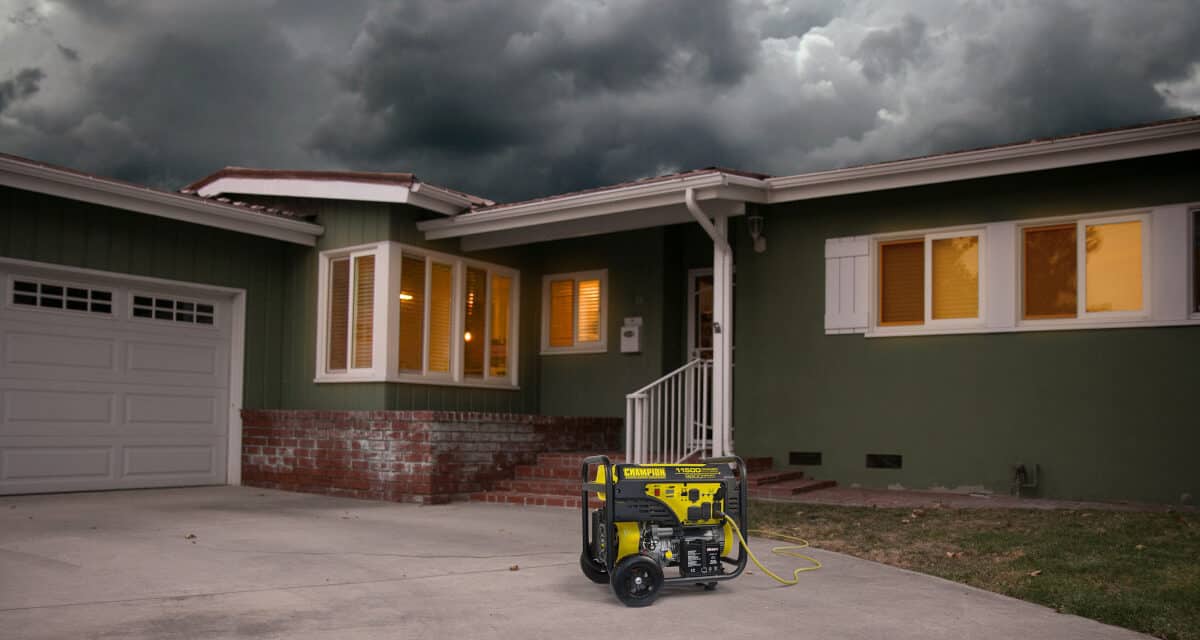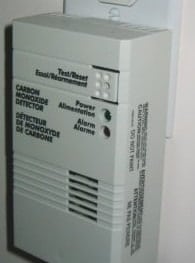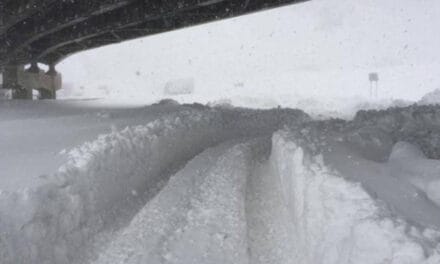Power Outages and Portable Generators
In the fall of 2012, Hurricane Sandy roared up the coast and left millions in the dark. Crews restored power to most people in about a week. Others were left waiting and hoping and wishing for electricity for more than a month. Bad weather and no power are worrisome. Your home cools until it becomes uncomfortable. Keeping the fridge closed only works so long and the temperature inside rises to an unsafe level within hours. Even worse, the heat is out and leaving you no way to keep warm.
Utility customers without power sometimes turn to portable generators. These workhorses can fill in during an outage, but they are not automatic and require frequent refueling and maintenance. That doesn’t mean you should not use them, only that special precautions must be taken to avoid illness or death.
Warning: Don’t use any generator to power a home unless you have carbon monoxide detectors located in all sleeping areas. Check batteries and test the units to ensure they work.
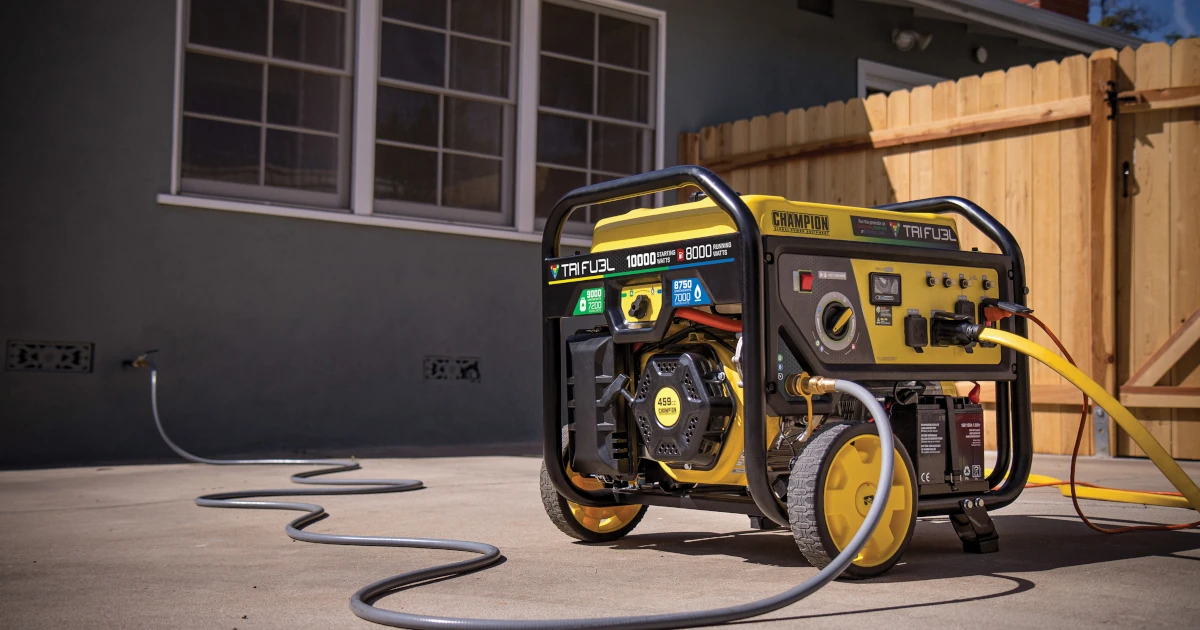
Carbon Monoxide
Carbon Monoxide is a deadly gas present in the exhaust of all internal combustion engines. In an enclosed space, even one with open windows or doors, CO rises to a lethal level in just a few minutes. When portable generators run indoors, they fill the room and house with exhaust fumes. Opening windows and doors does not prevent CO buildup in a home. NEVER run a portable generator or any internal combustion engine indoors.
The best guideline is the further from the house the better. Consider 10 feet as the minimum distance, and 20 is much better. Don’t forget to take in other factors. Small openings can create an air intake and pull exhaust fumes inside the home. Such was the case when two sisters died of CO poisoning after Hurricane Sandy. A window was open just a crack to allow an extension cord from the generator into the home. Consider the wind direction when you position the portable generator. Don’t allow the exhaust to blow directly at vents, open windows, open doors, or other openings on your home or your neighbors.
Did You Know That FEMA Recommends Backup Power for Homes?
Extension Cords
Use extension cords made for outdoor use and rated for the current they will carry. If you plug a cord into a 20-amp outlet, the cord must have 12-gauge or 10-gauge wires. Extension Cords made for a Generator have heavy duty outer sheathing that resists cuts and abrasion, and stays flexible in cold weather.
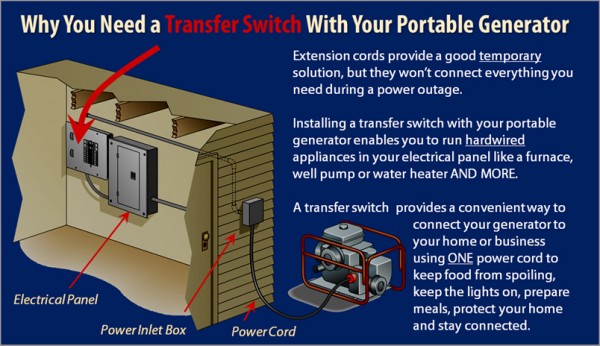
A transfer switch, now required by the National Electric Code, connects to the circuits in your electrical panel that you’ll need most during a power outage, like a furnace, lights, well pump, television, garage door opener, etc.
The best portable generator connection is a generator cord that plugs into an inlet box. The inlet box connects to a manual transfer switch which provides power to selected circuits. It allows your generator to run permanently wired appliances such as your furnace. The switch disconnects the home from the distribution grid to prevent injury to line workers and prevent overloading the generator. It also protects the generator when the power comes back on.
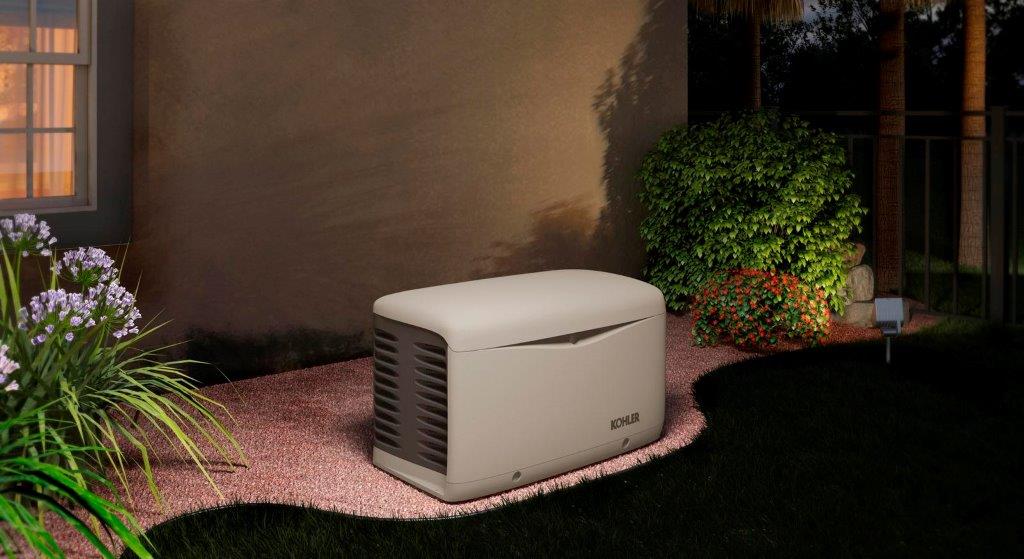
Upgrade
Let’s face it. Who wants to run outside in the middle of a blizzard to drag the generator out of the garage or shed, connect it to the house, fill it with fuel and get it started. Then, every few hours, run back outside, shut it down, let it cool, fill it with fuel, check the oil, and then you can start it again.
A standby generator like the Kohler 20kw can put an end to fuel storage issues and or hooking up a portable in the middle of the night while a storm rages. Standby units like this include a 200-amp automatic transfer switch and are service-entrance rated. The system on your home gas supply (natural gas or propane) for a fully automatic, permanently installed solution that begins providing power just seconds after an outage is detected.
The installer makes the generator connection between your electric meter and main service panel to provide you with power throughout any outage, and they can run for more than a week before requiring maintenance (check oil daily.) Keep the vents and cover clear of snow and debris and you’re ready to power through the next storm.
Generators are a life saver and keep you in your home during an extended outage. Use them safely and consider installing a standby unit made for emergency home power. It’s worth peace of mind and the safety it provides your family and your home
Updated 12/30/2022

